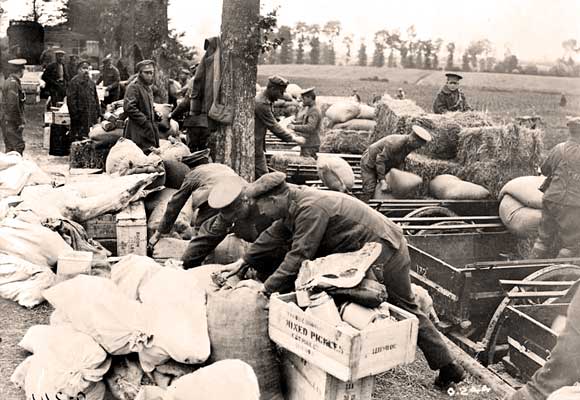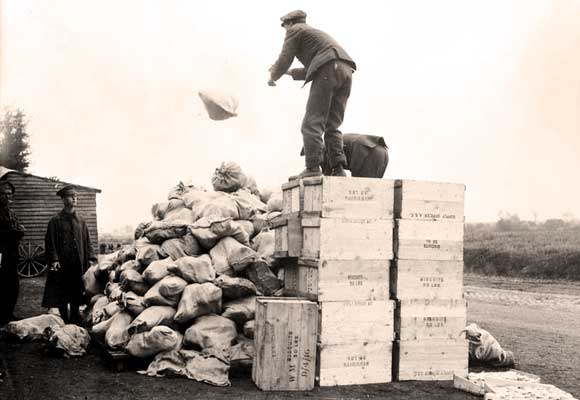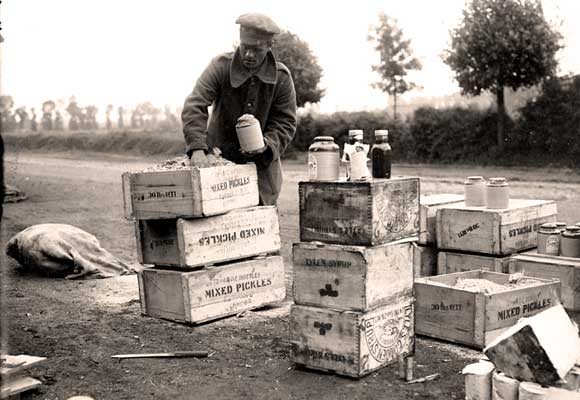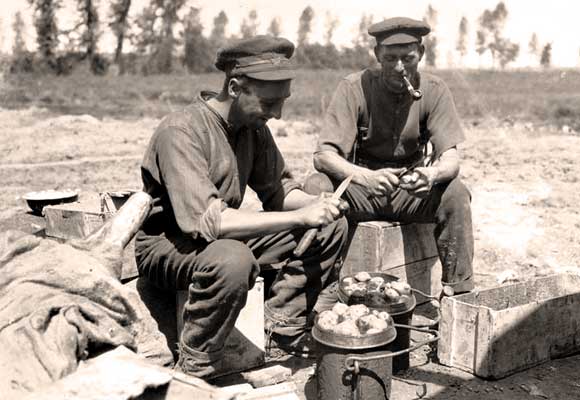Rations
Archived Content
Archived information is provided for reference, research or recordkeeping purposes. It is not subject to the Government of Canada Web Standards and has not been altered or updated since it was archived. Please contact us to request a format other than those available.
Troops serving in the trenches received a regular supply of food called rations. The daily ration for a British soldier consisted of measured amounts of fresh or canned meat, bread, vegetables, bacon, cheese, jam, tea and sugar, rum and tobacco.
Mr. Patenaude describes the preparation and transportation of rations.
Transcript
When you say “bringing rations,” I have a meagre picture of what it is you were transporting. What did your little caravan consist of?
First of all, we would cook the rations at the back line. All my kitchen and stores, ordinance stores, were at the back, I would say about five miles, sometimes more. It would be four or five miles, you know. After the rations were cooked they were separated into companies, put into sandbags wrapped in papers and everything and my wagons and my horses had saddles made expressly to carry rations with hooks and everything. I would put the rations on the backs of those horses and I would walk in front with all my officers' horses and men following me. I would deliver the rations to a point which was given to me by the OC before the battle, “You will deliver your rations at such a point.” At that point, when I arrived, I would meet the rations parties of every company. They would take the rations of their company and leave for the front line which was about, I would say, a thousand yards from there. All this travelling between, a mile before the meeting point, it was shelling all the time. Of course I had to go around different places because it was full of wiring, traps and holes made by shells and everything, you know. I would leave about seven o'clock and reach the meeting point about eleven and there I'd deliver my rations which consisted of food, water and everything. The water, sometimes you'd get shells in your, we were carrying water in those gasoline tanks and sometimes you arrived at the front line and there were holes in them and there was no more water. There were all kinds of accidents. During a shelling men will drop on the ground in a water hole and the rations would be full of water, bread, meat and everything.
Images
- Date modified:



